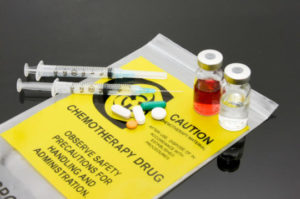Cancer Series Part 1: The History of Chemotherapy
“Gas! Gas!….flound’ring like a man in fire or lime… guttering, choking, drowning… blood come gargling from the froth-corrupted lungs.”
Few things evoke the horror of battle as powerfully as Wilfred Owens’ Dulce et Decorum Est. Even though the phrase, “war on cancer” has entered common parlance, few of us realize that one of the first weapons we had against this most feared malignancy came not from a hospital or lab, but from the trenches of the war that marks its centenary this year.
Mustard gas was first used in World War I, and even though it was subsequently outlawed under the Geneva Convention, over 2,000 nitrogen mustard bombs – 100 tonnes of the poison – were secretly stockpiled on a US ship anchored at Bari, an Italian base. When the SS John Harvey was blown up in a 1943 German air raid on Bari, it’s secret cargo detonated, causing untold death and suffering – and sowing the seed from which cancer medicine would grow.
A chemical warfare expert arrived to confront the aftermath, and the post-mortems he ordered showed something startling; people who had succumbed to the poison had very few lymph and bone marrow cells. These cells usually multiply very quickly.
Back then, cancer was an enigma. One of the few things known was that cancer cells, like lymph and bone marrow cells, multiply much faster than normal cells. Following the principle that “the dose makes the poison,” scientists wondered if a low dose of nitrogen mustard might be able to treat cancer.
Chemotherapy was born. Like war, it was dangerous and unpredictable, sometimes advancing, often forced to retreat. The first time a patient was treated with cyclophosphamide, the active part of nitrogen mustard, the tumour shrank, something not even thought possible. But it was a temporary miracle. Treatment had to be stopped when the patient’s side effects became life-threatening in themselves.

Life starts as a single cell, and diseases, including cancer, start at cell level. Usually, disease-causing cells can be found and destroyed because they are obviously different from our normal, healthy cells. Penicillin attacks a part of bacterial cells that human cells don’t have, leading to the elimination of bacteria with no damage to us. But cancer is our own cells slightly altered, which makes it very challenging to treat. For a long time, we thought our only chance was to attack quickly growing cells, and accept the collateral damage to normal cells that divide quickly; loss of healthy gut, immune system, hair, the devastating side effects of aggressive chemotherapy. It’s as destructive and senseless as it was to devastate Afghanistan to stop Bin Laden.
Thankfully, cancer medicine is going in a new direction. We don’t go to war with an entire country to bring down one man. Instead we use intelligence (our heightened knowledge of how cancer works) to track that man, and send in an elite team to stop him and only him (targeted therapy).
The last few decades of research have revealed that many cancers have special features that make them different from normal cells, and these differences provide us with cancer-specific drug targets.
One of these is a protein called HER2. About 25 out of 100 breast cancers have high levels of it on their cells, but the normal cells next to them have hardly any. In 1998, the FDA approved Herceptin, a drug that attaches to HER2 and destroys the cell that carries it. One of the first patients to be treated with Herceptin, expected to die within months, is still alive decades later. It isn’t the only targeted therapy success story. About 70 % of breast cancers are dependent on estrogen to survive, and many of these cancers which would have been invariably fatal thirty years ago are now completely cured, by drugs which block estrogen from being made, or interfere with its action. Some melanoma patients carry a mutated gene called BRAF600E, and drugs like Zelboraf which attack BRAFV600E have almost doubled survival for these patients. There are many more targeted therapies in the clinic, and even more doing well in clinical trials, and the search is on for even more cancer-specific targets.
Cancer is a cunning and devious enemy. There will be no one “cure for cancer” because “cancer” is a very large family of very different diseases. Herceptin doesn’t work on every cancer or even on every breast cancer. It only works on cancer cells with HER2. There are many battles yet to be fought before the war nears an end. But the success and promise of targeted therapies means that we can hope for a future where we will think of cancer as an illness, not a death sentence, and where cancer treatment can be as simple as taking a pill. No sickness, no side effects – and no fear.
Click here for part two in the series
This article was originally published by the Guardian
